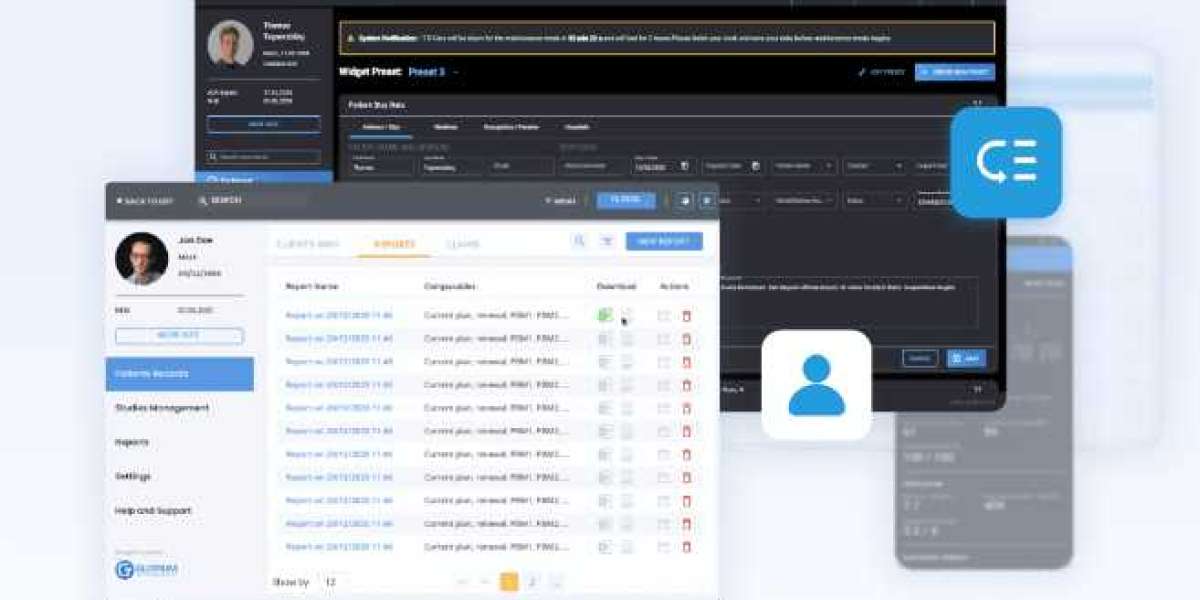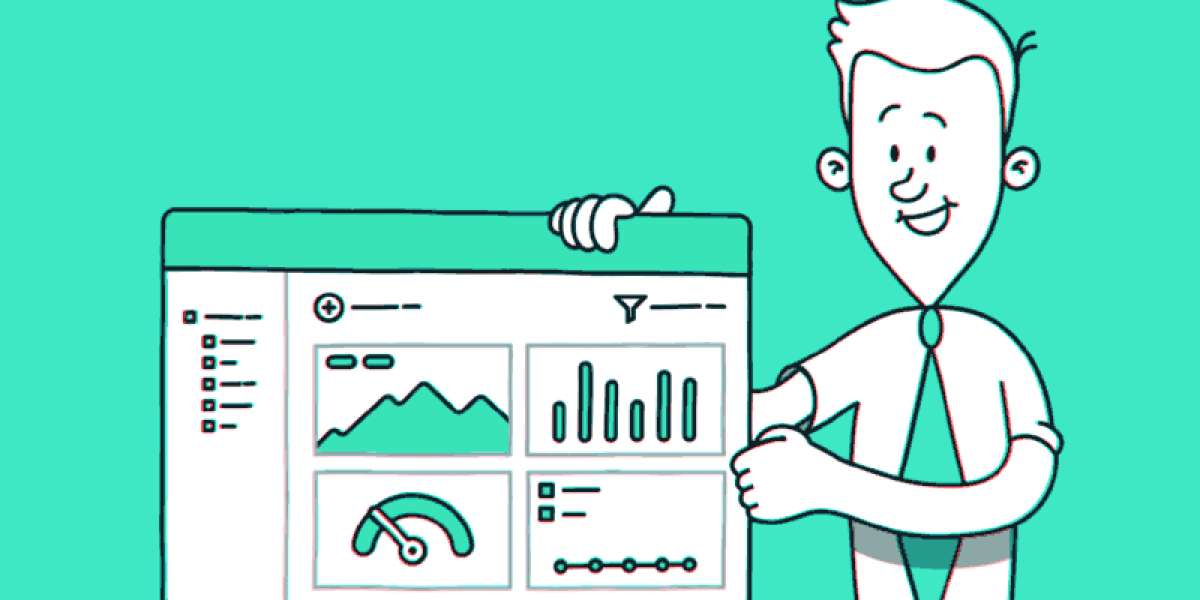In today’s healthcare landscape, digital transformation is essential for improving patient outcomes, streamlining administrative processes, and enhancing overall patient engagement. One of the key components of this transformation is the patient portal—a secure online platform that allows patients to access their health information, communicate with healthcare providers, schedule appointments, and much more.
This article delves into the intricacies of patient portal development, exploring its benefits, key features, development process, security considerations, and future trends.
What is a Patient Portal?
A patient portal is a web-based application or mobile app that provides patients with secure access to their personal health information (PHI). It connects directly to a healthcare provider’s electronic health record (EHR) system, ensuring that the information is always up-to-date. Patient portals are designed to give patients more control over their healthcare, empowering them to manage their health more effectively.
Types of Patient Portals
- Standalone Portals: These are independent portals that do not necessarily integrate with the EHR system. They are mainly used for patient education, providing general health information and tools for tracking health metrics.
- Integrated Portals: These are directly linked to a healthcare provider’s EHR system. They allow patients to access real-time medical records, test results, and other important health information. Most modern portals are integrated to offer a seamless experience.
Benefits of Patient Portals
The adoption of patient portals is rising due to the multiple benefits they offer both patients and healthcare providers.
1. Improved Patient Engagement
Patient portals empower individuals to actively participate in their healthcare journey. Patients can access their test results, track their health progress, and even research treatment options. This leads to increased health literacy and better communication between patients and providers.
2. Convenience and Accessibility
Patients no longer have to call or visit a healthcare facility to access their health information. Through the portal, they can:
- View their medical records
- Schedule appointments
- Request prescription refills
- Make payments
- Communicate with healthcare professionals via secure messaging
This level of accessibility is especially beneficial for patients with chronic conditions who require regular check-ups and monitoring.
3. Reduction in Administrative Burden
By automating many routine tasks, such as scheduling appointments and managing billing, patient portals help reduce the workload for administrative staff. This enables healthcare providers to focus on delivering quality care while minimizing operational inefficiencies.
4. Enhanced Communication
Patient portals offer secure messaging, allowing patients to communicate directly with their healthcare providers. This eliminates unnecessary in-person visits for minor issues and facilitates a more efficient exchange of information.
5. Increased Efficiency and Cost Savings
With fewer phone calls, reduced paperwork, and more automated processes, patient portals can help healthcare organizations operate more efficiently. This translates into cost savings, which can be passed on to the patient or reinvested into the healthcare system.
Key Features of a Successful Patient Portal
Developing a patient portal requires careful consideration of both patient and provider needs. Below are some of the essential features every patient portal should offer:
1. User-Friendly Interface
The portal should be intuitive and easy to navigate, even for users with limited technical skills. A clean design, clear labels, and simple navigation menus are crucial to ensuring that patients can quickly find the information they need.
2. Appointment Scheduling and Management
Patients should be able to view available time slots, schedule, reschedule, or cancel appointments directly through the portal. Integration with the healthcare provider’s calendar is essential to avoid double bookings or scheduling errors.
3. Access to Medical Records
Patients should have real-time access to their medical history, including diagnoses, treatments, immunizations, allergies, and test results. It’s also important to include an option for downloading or printing records for personal use or sharing with other healthcare providers.
4. Prescription Management
Patients should be able to request prescription refills, view their current medications, and see any drug-related information. This feature is particularly useful for individuals managing multiple prescriptions.
5. Secure Messaging
Communication between patients and providers should be encrypted and HIPAA-compliant to ensure the security and confidentiality of personal health information. This feature allows patients to ask questions, get advice, and follow up on treatment plans without needing to schedule an in-person visit.
6. Billing and Payments
The portal should offer a section where patients can view their bills, make payments, and review their insurance coverage. This feature not only improves patient satisfaction but also helps healthcare organizations get paid faster.
7. Educational Resources
Providing access to educational materials about health conditions, treatments, and medications can help improve patient health literacy. This can lead to better outcomes as patients become more knowledgeable about managing their health.
8. Mobile Compatibility
In today’s mobile-first world, ensuring that the patient portal is accessible via mobile devices is critical. Developing a responsive web design or a dedicated mobile app can provide patients with flexibility and ease of use.
The Development Process
Developing a patient portal involves multiple stages, from gathering requirements to deployment and post-launch support. Here is a step-by-step overview of the process:
1. Requirement Gathering
The first step in patient portal development is understanding the specific needs of the healthcare organization and its patients. This involves consulting with stakeholders—doctors, nurses, administrative staff, and patients—to gather insights into what features are necessary.
2. Platform Selection
Based on the requirements, the next step is choosing the right platform for development. Will the portal be a web-based application, a mobile app, or both? Does it need to integrate with an existing EHR system, or will it be standalone?
3. Design and Prototyping
Once the platform is selected, the next step is designing the user interface. This is where the focus on usability comes into play. Wireframes and prototypes can be developed to show stakeholders how the portal will look and function.
4. Development
After the design is approved, the actual development process begins. Developers will work on coding the various features, integrating the portal with the EHR system, and ensuring that the platform is secure and scalable.
5. Testing
Before launching the portal, it’s essential to conduct thorough testing. This includes:
- Functionality Testing: Ensuring all features work as intended.
- Security Testing: Identifying and fixing any vulnerabilities that could lead to data breaches.
- Usability Testing: Ensuring the platform is easy to use for both patients and healthcare providers.
6. Deployment
Once the testing phase is complete, the portal is deployed. Healthcare providers will need to train their staff on how to use the portal and provide patients with instructions for accessing their accounts.
7. Post-Launch Support
Even after the portal is launched, continuous monitoring and maintenance are necessary to fix bugs, introduce new features, and ensure that the platform complies with evolving healthcare regulations.
Security and Compliance Considerations
Security is one of the most critical aspects of patient portal development. Patient portals store sensitive health information, making them prime targets for cyberattacks. Ensuring that the portal is secure and complies with healthcare regulations such as the Health Insurance Portability and Accountability Act (HIPAA) is essential.
1. Data Encryption
All patient data transmitted between the portal and the server should be encrypted to prevent unauthorized access. This ensures that even if data is intercepted, it cannot be read or tampered with.
2. Multi-Factor Authentication
Implementing multi-factor authentication (MFA) adds an extra layer of security, ensuring that only authorized users can access the portal. This can involve sending a one-time code to a user’s phone or requiring biometric authentication.
3. Role-Based Access Control
Not all users need access to all parts of the portal. Implementing role-based access control ensures that only authorized personnel (e.g., doctors, nurses, administrative staff) can view or modify specific data.
4. Audit Trails
Keeping a record of all actions performed in the portal—such as viewing or modifying patient records—helps maintain accountability and can be used to detect suspicious activity.
Future Trends in Patient Portal Development
The healthcare industry is constantly evolving, and so are patient portals. Here are some trends shaping the future of patient portal development:
1. Artificial Intelligence and Chatbots
AI-powered chatbots can enhance patient portals by answering common questions, scheduling appointments, and providing personalized health advice. These tools can improve patient engagement while reducing the workload for healthcare staff.
2. Telemedicine Integration
As telemedicine becomes more popular, integrating video consultations into patient portals will become increasingly common. This will allow patients to consult with healthcare providers remotely, further enhancing convenience and accessibility.
3. Wearable Device Integration
With the rise of wearable health devices like fitness trackers and smartwatches, patient portals may soon integrate data from these devices. This can provide healthcare providers with a more comprehensive view of a patient’s health, allowing for more personalized care.
4. Blockchain for Enhanced Security
Blockchain technology has the potential to improve the security of patient portals by creating tamper-proof records of patient data. This could make it even more difficult for cybercriminals to access or modify sensitive information.
5. Personalized Health Insights
Advancements in data analytics and machine learning could enable patient portals to offer personalized health insights. For example, based on a patient’s medical history and lifestyle data, the portal could recommend preventive measures or flag potential health risks.
Conclusion
Patient portal development is transforming the way healthcare is delivered, offering greater convenience, improved patient engagement, and enhanced operational efficiency. As healthcare continues to evolve, patient portals will play an increasingly central role in connecting patients with their healthcare providers, empowering them to take







